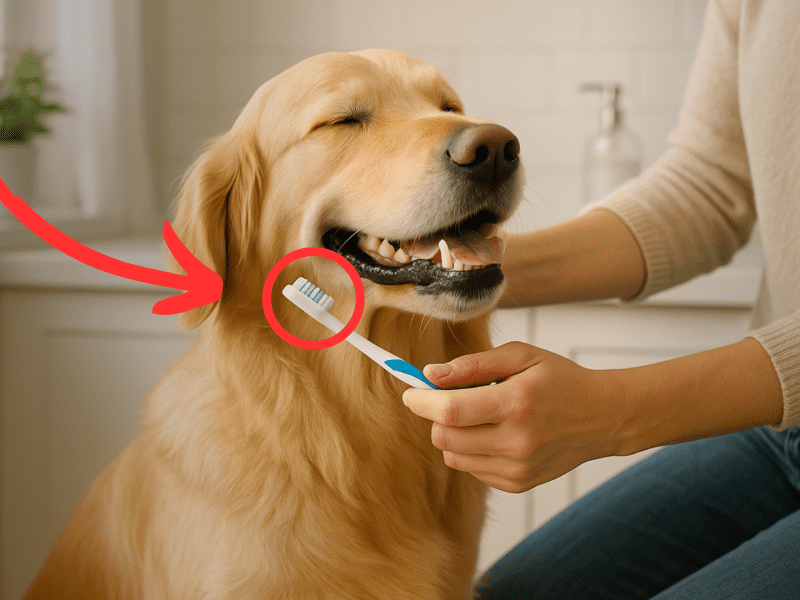If you have a dog, you want to keep them healthy. One way to do this is by feeding them fruits, as they can be good for their overall health. But, some fruits can be bad for dogs and too much fruit can also make them sick. Wondering which fruits are okay to give your furry friend? In this article, we will talk more about whether or not dogs can eat fruits, and what you need to know about adding them to your dog’s diet.
Benefits of fruits for dogs
One of the most important things to us is ensuring that our pets stay healthy. Not only do we want them to live long, happy lives, but we also want them to feel their best every day.
We all know that a balanced diet is essential to good health, but did you know that fruits can play a significant role in your dog’s well-being too? Fruits are packed with nutrients such as vitamins and minerals that can help boost your dog’s immune system and improve their digestion.
1. Fruits are high in vitamins and antioxidants
Fruits are packed with vitamins, minerals, and antioxidants that can help bolster a dog’s immune system. These nutrients can help fight off infections and diseases by strengthening the body’s natural defenses. For example, fruits like blueberries and cranberries contain antioxidants that can protect cells from damage caused by free radicals. This can reduce the risk of inflammation, cancer, and other health problems.
2. Fruits can aid in digestion and improve dogs’ health
Most fruits contain fiber, which is essential for healthy digestion. Fiber helps regulate bowel movements and promotes the growth of beneficial gut bacteria. Additionally, fruits are low in calories and fat, making them ideal for dogs that need to maintain a healthy weight. Certain fruits such as pineapples contain enzymes that help break down proteins, which can be beneficial for dogs that have trouble digesting protein-heavy diets.
My Experience Feeding Fruits To My Dog
When I first got my dog, I was unsure if I should feed her anything other than regular dog food. But, after reading about how adding fruits to a dog’s diet can be helpful, I decided it was worth trying.
So I started small – offering her tiny pieces of apple and banana as treats during training sessions. To my surprise (and delight), my pup loved these new additions to her diet!
My dog got really happy when she saw me giving her fruit, and I also saw her become more active and her fur became shinier after just a few weeks of adding fruit to her meals. Since then, I’ve tried different kinds of fruits, but I always check first to make sure they are safe for dogs. This way, my dog can get all the good things from the different fruits.
Safe Fruits Dogs Can Eat

1. Apples
Apples are a fantastic source of fiber, vitamin C, and antioxidants for dogs. The pectin found in apples can also aid in digestion and help regulate blood sugar levels.
2. Bananas
Bananas are a great source of potassium, vitamin B6, fiber, and copper for dogs. They’re also low in cholesterol and sodium which makes them a healthier alternative to traditional treats. However, bananas are high in sugar which can contribute to weight gain if fed excessively.
3. Blueberries
Blueberries are good for people because they can help with inflammation and cell damage. Dogs can also benefit from blueberries because they can help the brain work better and lower the chance of getting cancer. But do not give dogs a lot of blueberries because they still have sugar in them that can make them fat if they eat too much. Read The Top 10 Safe Fruit Your Dog for more details about safe fruits and how to feed your dog correctly.
A Disadvantage of Fruit for Dog

1. High Sugar in Fruits
While fruits are generally healthy, some fruits, especially those that are dried or canned, can have very high sugar content. Too much sugar can lead to weight gain and obesity, which can in turn increase the risk of other health problems like diabetes, heart disease, and joint problems. It’s important to feed fruits to your dog in moderation and as a supplement to a balanced diet that meets their nutritional needs.
2. Fruit to Avoid Feeding Dogs
While some fruits are safe for dogs to eat, there are also some fruits that can be toxic and even deadly. For example, grapes and raisins are highly toxic to dogs and can cause kidney damage or failure. Similarly, cherries and peach pits contain cyanide, which can be toxic in large quantities. It’s important to always check with a veterinarian before feeding a new food to your dog to make sure it’s safe.
How Much Fruit Should You Feed Your Dog?
Knowing how much fruit to feed your dog is important for their health and well-being. However, there’s no hard and fast rule regarding the amount of fruit a dog can eat.
Factors such as age, weight, breed, activity level, and overall health will affect how much fruit you should give your furry friend. A good rule is to keep the fruit as a treat or supplement to their regular diet rather than making it the main component of their meals.
Dogs need different kinds of food than humans. But if you give too much fruit can make them sick with diarrhea or an upset stomach. So start with a little bit of fruit and give more over time while watching how they react to it.
How to Safely Adding Fruits Into a Dog’s Diet

1. Amount of Fruits Dogs Can Eat
Several factors determine how much fruit you should feed your dog. Firstly, the size and weight of your pooch will play a big role in determining the right amount. Smaller dogs will require less than larger breeds like Great Danes or Mastiffs.
Secondly, age is an important consideration when it comes to determining the quantity of fruits for dogs. Younger puppies will have smaller stomachs and therefore require smaller portions compared to adult dogs.
Breed type is another factor that affects how much fruit you should give your dog since some breeds are more predisposed to certain medical conditions than others. For instance, Bulldogs and other short-nosed breeds may struggle with digestion due to their brachycephalic nature.
Activity level also plays a role in determining the appropriate amount of fruits that dogs can eat since more active canines require more calories than sedentary ones. Always consult your vet before adding any new foods or supplements to your pup’s diet; they’ll be able to give more personalized recommendations based on your dog’s specific needs.
2. Ways to Add Fruit to a Dog’s Meals
There are different ways to add fruits to a dog’s meals. Some owners prefer to feed fruits as treats, giving them a small amount in between meals.
Others choose to mix fruits into their dog’s regular food, either by mashing them up or using them as a topper. One more option is to freeze small pieces of fruit into an ice cube tray to create a healthy and refreshing snack for your pup on a hot day. Whatever method you choose, be sure to give fruits to your dog in a way that makes them comfortable and happy.
Conclusion
Feeding fruits to dogs can be a great way to boost their overall health and well-being. The key is to choose the right fruits in the appropriate amounts and ensure that they are fed safely.
When feeding a new fruit to your dog, it’s always best to start with small amounts and see their reaction closely. Remember that while fruits offer many benefits, they should not replace your dog’s regular diet of high-quality dog food.
Fruits are meant to supplement their diet and offer additional nutrients. In addition, different breeds of dogs may have varying tolerances for certain types of fruits, so it’s important to consult with your veterinarian before making any major changes in your dog’s diet.
Overall, by adding safe and healthy fruits into your dog’s diet in moderation, you can help them lead a happier and healthier life. Happy snacking!
Recommended Reading
- The Top 10 Safe Fruit Your Dog Can Eat
- Can Dog Eat Avocado? Here’s the Answer
- Training Guide: How to Turn Any Dog into a Hunting Dog



